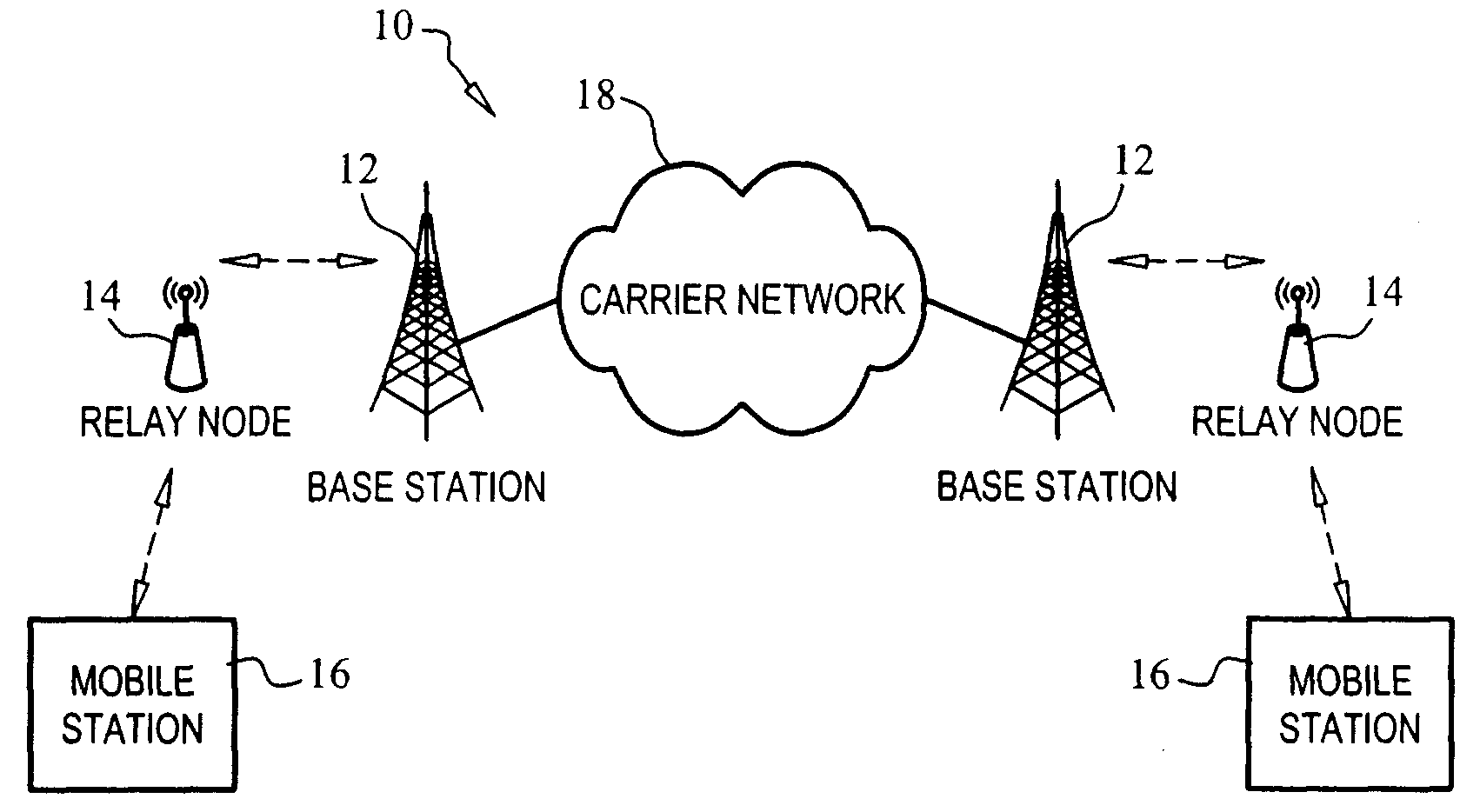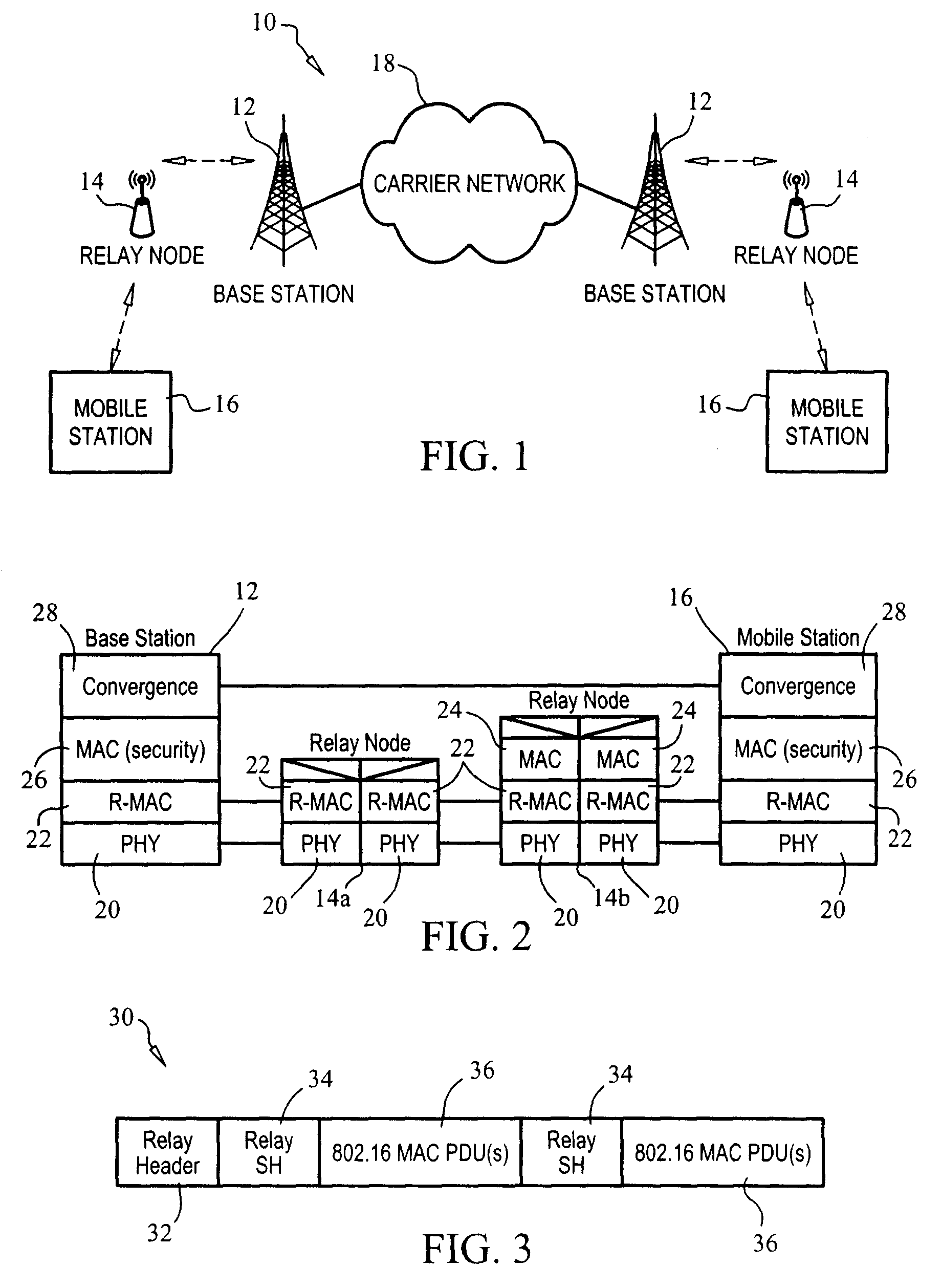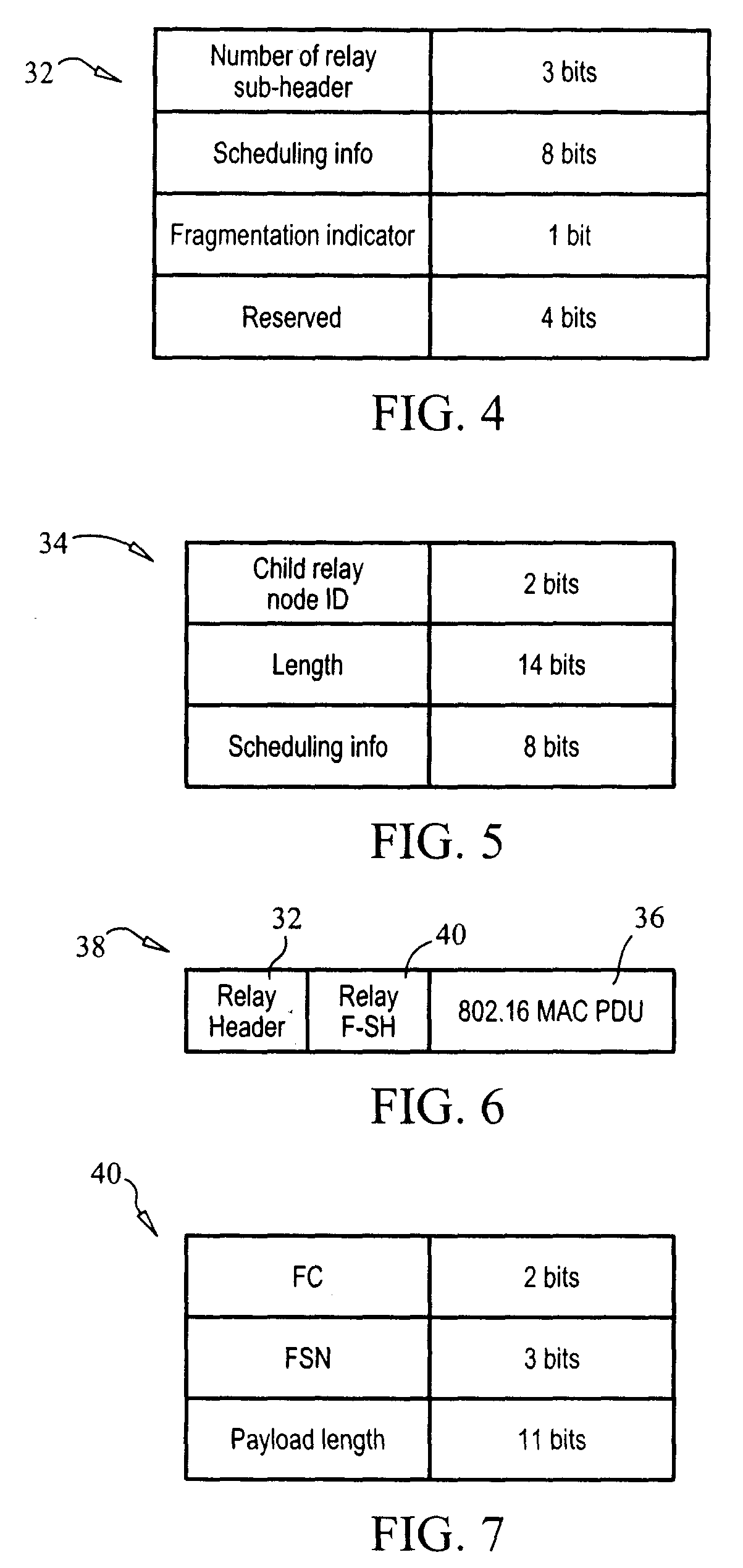Media Access Control Data Plane System and Method for Wireless Communication Networks
a wireless communication network and data plane technology, applied in the field of wireless communication, can solve the problems of limited data throughput using current cellular technologies to a few mb/sec, limited bandwidth and distance of ieee 802.11-based networks, and the 802.16e standard does not provide support for multi-hop networks
- Summary
- Abstract
- Description
- Claims
- Application Information
AI Technical Summary
Benefits of technology
Problems solved by technology
Method used
Image
Examples
embodiment
First Relay Mesh Network Embodiment
[0081]FIG. 19 shows an exemplary system component arrangement supporting the first embodiment. As is shown, the connection between base station 12 and mobile station 16 is based on an end-to-end CID. Of note, FIG. 19 is a simplified version, it being understood that the CID connection between base station 12 and mobile station 16 can traverse one or more relay nodes 14. Security in this embodiment is formed on an end-to-end basis, i.e., between base station 12 and mobile station 16. In other words, no additional protection is provided for relay traffic between base station 12 and relay node 14, between relay nodes 14 or between the last hop relay node 14 and mobile station 16.
[0082]The protocol stack supporting this first embodiment is similar to that shown in FIG. 13 with the exception that, in this embodiment, R-MAC shown in FIG. 13 is substituted by a mesh-MAC (“M-MAC”) supporting data plane mesh operation and, the MAC in base station 12 and MAC...
second embodiment
Mesh Relay Second Embodiment
[0091]Referring to FIG. 19, like the first embodiment, the connection is an end-to-end CID-based connection. However, unlike the first embodiment, encryption is provided on a link, i.e., hop basis. In other words, the base station 12 to relay node 14 link is encrypted. Relay node 14 then de-encrypts and re-encrypts the traffic destined for mobile station 16. In terms of protocol stack, no special M-MAC is needed. As such, the base station 12 provides security at the MAC layer for transmission to relay node 14. Similarly, relay nodes 14 provide encryption at their MAC layer. Finally, mobile stations 16 provide for the encryption at their MAC layer.
[0092]In operation, each relay node 14 re-assembles any fragment of MAC service data unit (“SDU”). By way of distinguishing, a protocol data unit (“PDU”) refers to the data format passed to the lower part, with respect to the protocol stack of the MAC to the physical layer. The service data unit (“SDU”) refers to...
third embodiment
Mesh Relay Third Embodiment
[0094]In the third embodiment, security is provided on an end-to-end basis. As is shown in FIG. 21, the actual data plane connection is based on a packet-based logical end-to-end connection. In other words, a connection between base station 12 and mobile station 16 does not require that the same path through the relay node mesh be taken for each packet.
[0095]The protocol stack for this embodiment is similar to that shown in FIG. 13. However, the R-MAC stack noted in FIG. 13 is replaced by an M-MAC protocol within the stack for each of base station 12, relay nodes 14 and mobile station 16. In addition, the present embodiment provides an enhanced MAC (“E-MAC”) in place of the known MAC for each of base station 12, relay nodes 14 and mobile station 16. Security between base station 12 and mobile station 16 is provided within the enhanced MAC layer of base station 12 and mobile station 16. In other words, no additional protection for relay traffic is provided ...
PUM
 Login to View More
Login to View More Abstract
Description
Claims
Application Information
 Login to View More
Login to View More - R&D
- Intellectual Property
- Life Sciences
- Materials
- Tech Scout
- Unparalleled Data Quality
- Higher Quality Content
- 60% Fewer Hallucinations
Browse by: Latest US Patents, China's latest patents, Technical Efficacy Thesaurus, Application Domain, Technology Topic, Popular Technical Reports.
© 2025 PatSnap. All rights reserved.Legal|Privacy policy|Modern Slavery Act Transparency Statement|Sitemap|About US| Contact US: help@patsnap.com



